Idea Management: Definition, Best Software to Manage Ideas for Product Management
Good product management relies on two things:
- The amount of coffee you drink
- The quality of ideas you gather from users
The first one is simple to master. But the second one – not so much.
Valuable insights from your users can easily languish unnoticed. The risk of falling behind grows with every idea that’s lost in the shuffle of daily tasks.
Idea management software centralizes customer feedback, providing a systematic process for identifying the most impactful ideas. It helps you stay ahead of the curve and deliver features that truly resonate with your audience.
In this article, we’ll explain what the idea management is and show you a few solutions to master it as a Product Manager:
What is idea management?
Idea management is the systematic process of capturing, discussing, evaluating, and prioritizing ideas to drive innovation and improvement.
In product management, it involves gathering input from customers, internal teams, and market research to identify potential new features, product enhancements, or solutions to user pain points.
Say a customer suggests a brilliant feature idea in a support chat, or your sales team hears the same feature request repeatedly.
Effective idea management ensures you never forget valuable ideas and helps your team align the product roadmap with user needs.
To build such a workflow, you need the right tools. In the next section, we’ll show you 6 most popular idea management tools for product managers:
Top 8 Idea Management Software
Here’s a list of 8 most useful idea management apps:
Top pick: Fibery
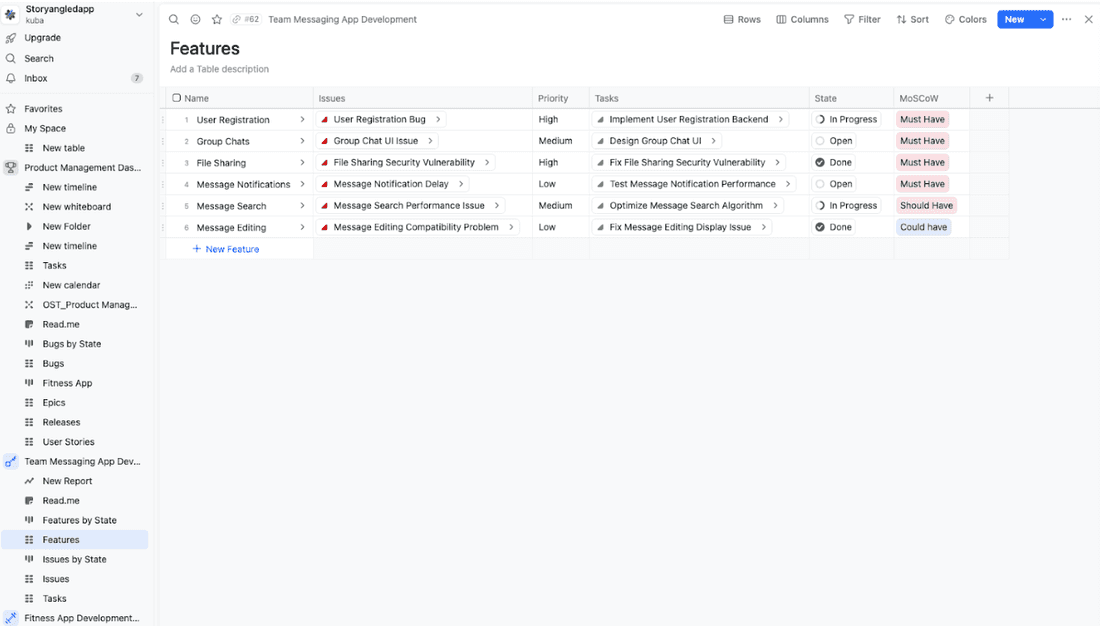
- Price: Free to start ($10/month after 14 days). Flexible pricing plans based on team size and features.
- Best for: Product teams that need adaptable workflows, want to connect ideas to rich context (feedback, research, etc.), and prioritize collaboration within their process.
Fibery takes a unique approach to idea management by focusing on customization. Instead of forcing you into a pre-defined structure, Fibery gives you the tools to shape your process from the ground up.
You can define exactly what information to capture about each idea, how ideas relate to customer feedback or market trends, and create custom visualizations to track their progress.
This flexibility is ideal for teams whose idea management needs evolve over time. For example, you could start with a simple Kanban board, and later add more sophisticated stages, detailed prioritization criteria, and connect ideas to broader strategic goals – all within Fibery.
Collaboration features are woven throughout Fibery’s approach. Discussions can happen directly on ideas, and notifications keep stakeholders informed. This transparency helps product teams solicit feedback, align priorities, and ensure the best ideas rise to the top.
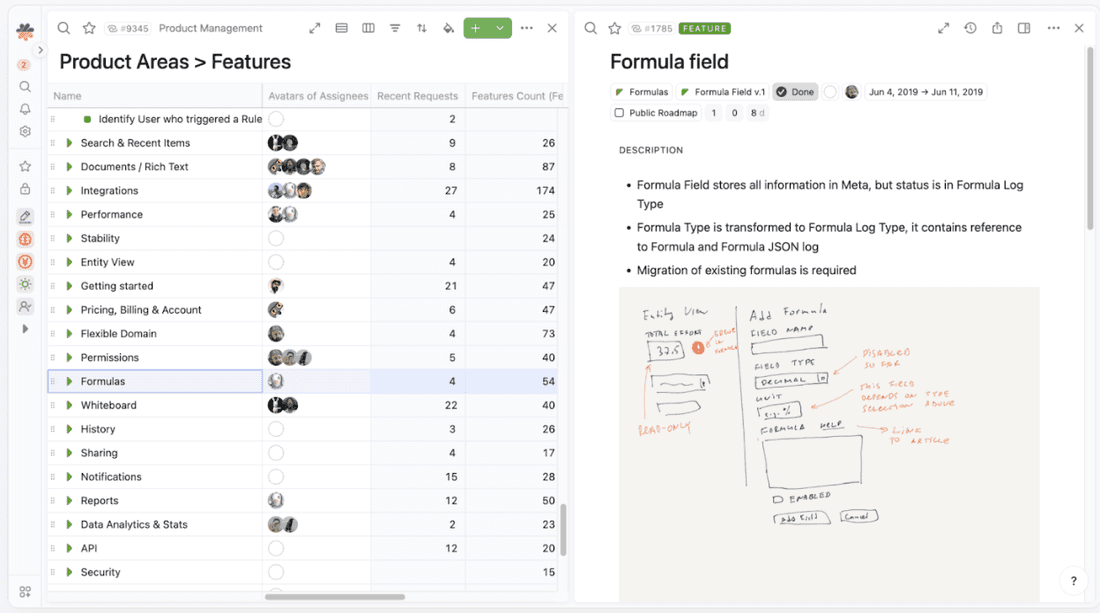
Fibery synchronizes idea management with product development. Without leaving your Fibery workspace, you can gather and execute the ideas gathered from user feedback or customer service.
Our AI co-pilot (an actually useful one) keeps track of the feedback received and the market signals to keep your development on the right track.
Sign up for a free 14-day trial and experience the freedom of not relying on gut instinct when developing products.
“As a product leader, it’s the first tool that will truly take you through the entirety of the product lifecycle—from corporate and product strategy to goal-setting, to customer and product discovery, to development and go-to-market.”
Notion
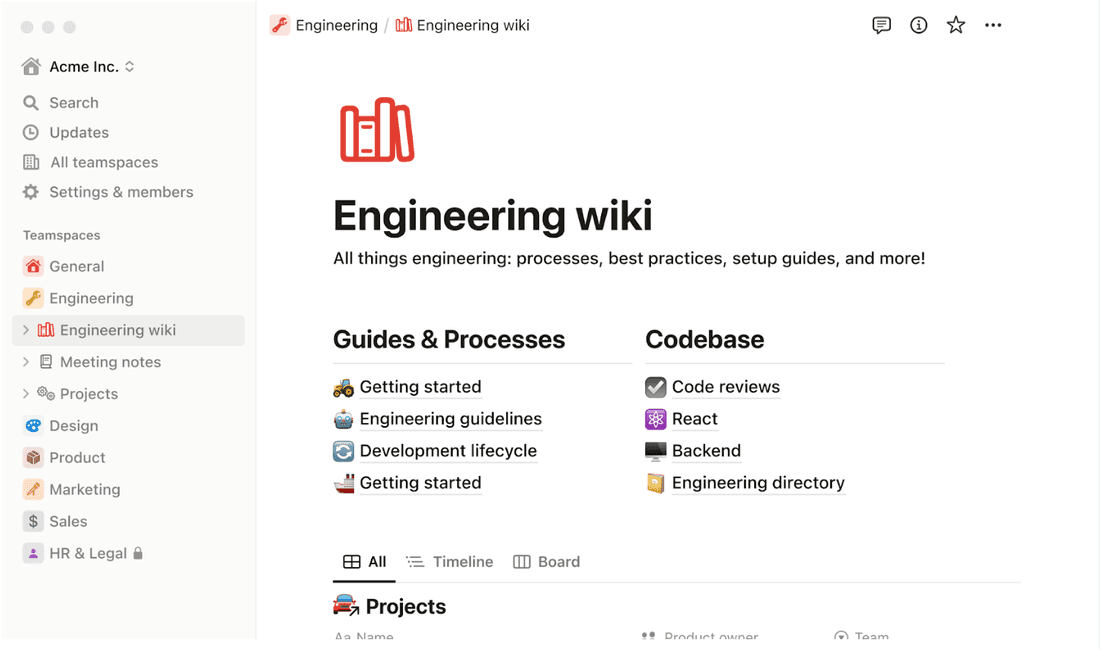
-
Price: Free plan with limitations; paid plans start at $8/user per month.
-
Best for: Teams that love document-style flexibility and want a tool that can also serve other purposes (note-taking, knowledge base, etc.)
Notion’s strength lies in its freeform, document-like structure. This makes it remarkably versatile, including for idea management. Teams can set up Notion pages or databases to collect ideas, add rich descriptions, attach supporting files or links, and customize views to suit their process.
Because Notion is so adaptable, there’s no single “right” way to manage ideas within it. Here are a few ways it can be done:
- Simple Idea Boards: Use Kanban-style databases to move ideas through stages like “New,” “In Review,” and “Implemented.”
- Idea Repository: Create a single database where ideas are extensively documented, tagged, and linked to relevant projects or research.
- Idea Hubs: Dedicate Notion pages to specific themes, allowing for focused discussions and elaboration of product concepts.
While Notion is great for capturing ideas, its strength is less in structured prioritization or data analysis compared to more specialized tools. Teams using Notion often supplement it with spreadsheets or additional tools to track idea metrics.
Coda
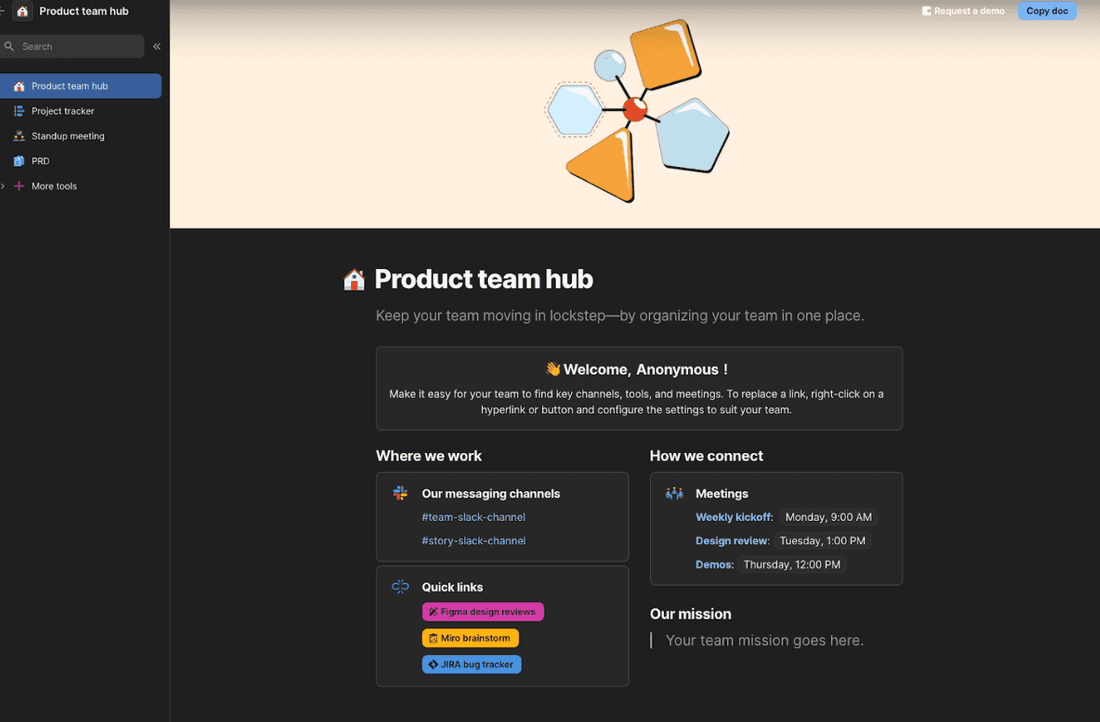
-
Price: Free plan with limitations; paid plans start at $10/doc maker per month.
-
Best for: Teams that love the power and flexibility of spreadsheets combined with collaborative, document-like features.
Coda, like Notion, offers a highly customizable canvas for tracking and managing ideas. Its core strength lies in combining the structure of tables (similar to spreadsheets) with the collaborative power of a document editor.
Here’s what makes Coda stand out for idea management:
- Tables with Superpowers: Coda tables aren’t just rows and columns. They can have buttons to trigger actions, incorporate data from other sources, and be embedded within documents for added context.
- Flexible Structure: Create idea tables from scratch, or use pre-built templates to get started. Coda’s building blocks let you design the perfect layout to track idea descriptions, priority scores, links to customer feedback, and more.
- The Power of Formulas: Coda users comfortable with formulas can create powerful calculations to assist with prioritization, idea scoring, or even pull in data from external sources.
If your team likes the potential of combining spreadsheets, documents, and even lightweight automations, Coda provides a compelling option. However, those less familiar with formulas or complex table setup might find the learning curve slightly steeper than more visual tools.
Aha!
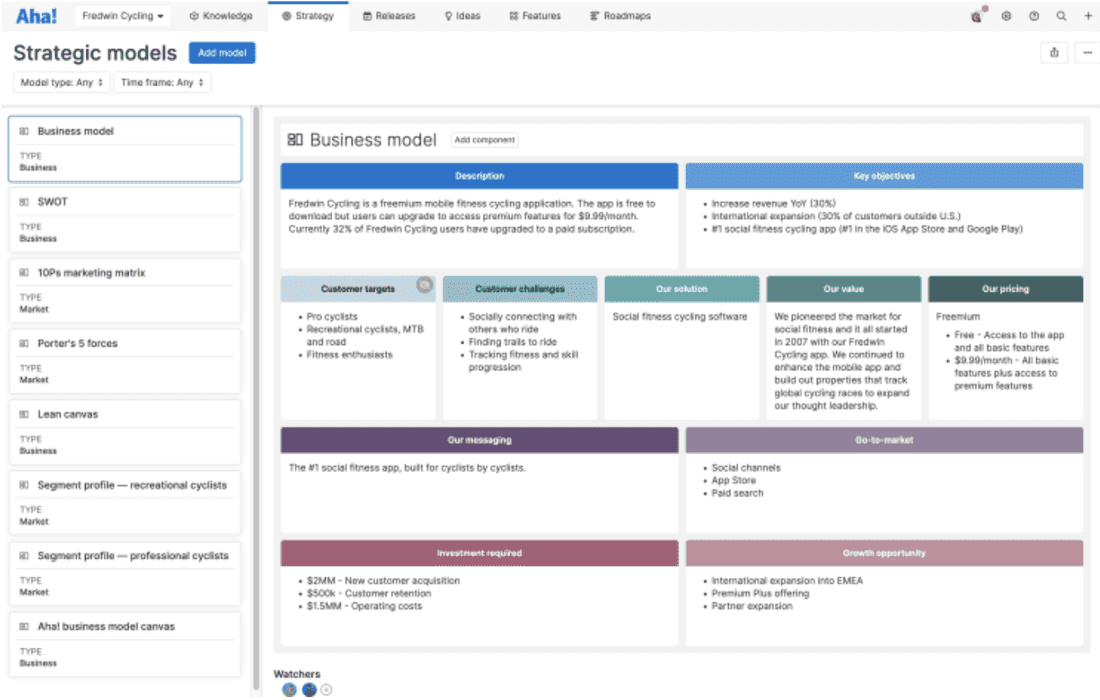
-
Price: Starts at $59/user per month, with higher tiers for more advanced features.
-
Best for: Established product teams with a need for robust idea management workflows, structured prioritization frameworks, and integration with their roadmapping tools.
Aha! is a specialized product management platform with a strong emphasis on idea management and roadmapping. Unlike the more freeform tools we’ve discussed, Aha! provides a defined structure built around the product development process.
Key features for idea management in Aha!:
- Dedicated Idea Portals: Create customizable portals for collecting ideas from customers, employees, or specific stakeholders.
- Structured Idea Capture: Aha! prompts users to provide essential information about ideas, ensuring consistency and aiding in later evaluation.
- Prioritization Frameworks: Apply built-in scoring models (RICE, Value vs. Effort, etc.) or create custom frameworks to rank ideas objectively.
- Seamless Roadmapping: Top-rated ideas can be easily pushed into your Aha! product roadmaps, keeping your planning aligned with idea input.
Aha! might be less suitable for teams in the very early stages of idea generation, where a more free-flowing approach is needed. The cost per user also makes it a better fit for established teams than those just starting out.
Brightidea
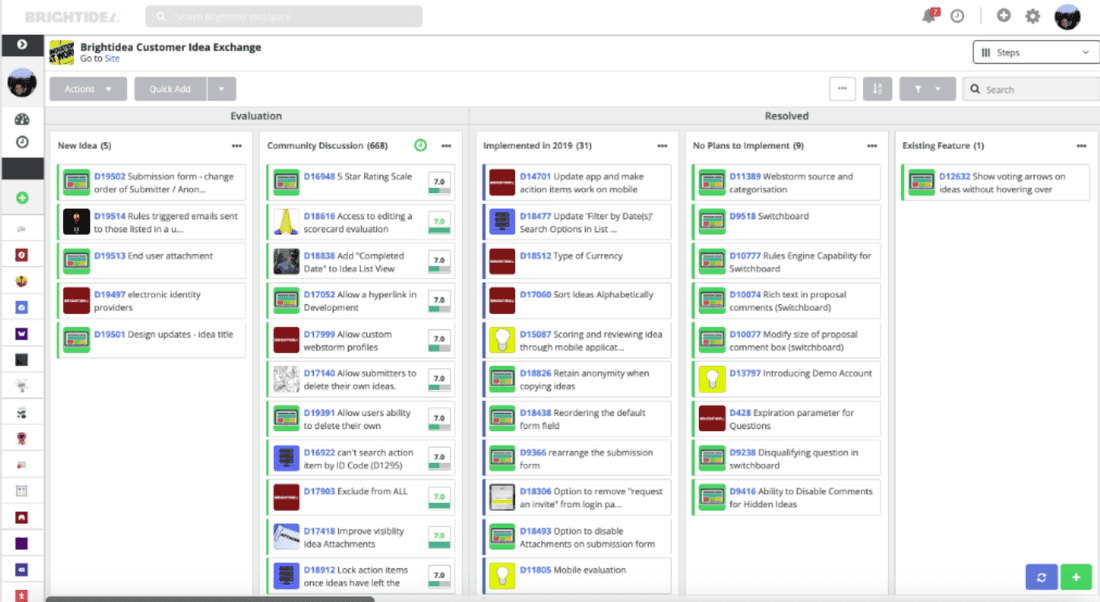
-
Price: Quote-based pricing model. (Note: This means they don’t openly advertise prices, and you’ll need to contact them for a custom quote).
-
Best for: Enterprises or large teams focused on structured innovation programs, want extensive customization options, and need to facilitate idea campaigns and challenges.
Brightidea is a dedicated idea management platform with a strong reputation in the enterprise space. Its focus is on helping organizations tap into the collective knowledge of employees, customers, and external partners to drive innovation.
Here’s what sets Brightidea apart:
- Gamification & Challenges: Brightidea offers gamification elements, leaderboards, and the ability to run targeted idea challenges to encourage participation and generate a high volume of ideas.
- Robust Configuration: The platform provides extensive customization options for idea submission forms, workflows, voting systems, and analytics, allowing it to be tailored to specific processes.
- Social Features: Brightidea promotes collaboration with commenting, voting, and social networking-like elements to foster a sense of community around innovation.
- Idea Evaluation Tools: Provides built-in tools and customizable scoring models to assist with prioritizing ideas.
Brightidea’s enterprise focus means it may be less streamlined for smaller teams or those needing a quick setup process. The quote-based pricing also suggests it sits in a higher price bracket than some of the other solutions we’ve discussed.
Planbox
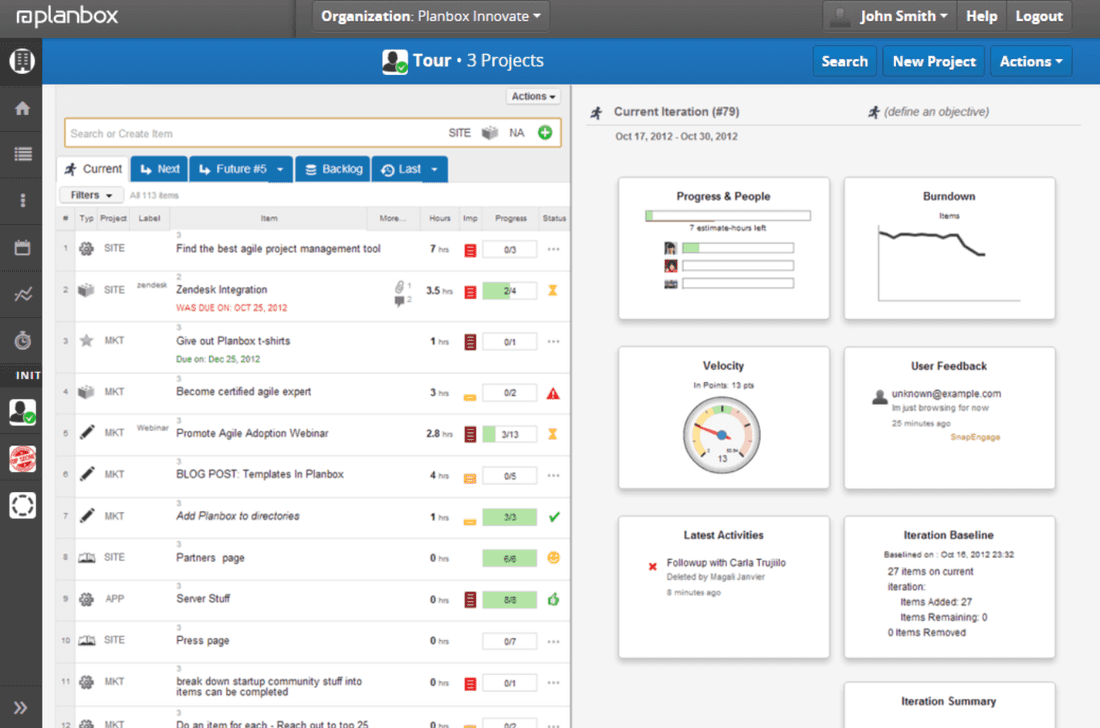
- Price: Quote-based pricing, but plans typically start around $25/user per month.
- Best for: Established product teams that want a comprehensive innovation management platform, need robust reporting capabilities, and value integration with existing development tools.
Planbox is a specialized platform that goes beyond idea management to support the full product innovation lifecycle. It offers a structured approach for teams to collect, evaluate, prioritize, and ultimately execute on new ideas.
Notable features for idea management within Planbox:
- Configurable Workflows: Define multi-stage workflows for idea review and approval, ensuring a structured process from submission to decision.
- Centralized Hub: Planbox provides a single repository for ideas, feedback, and supporting documentation, keeping all innovation-related information organized.
- Built-in Prioritization: Utilize scoring models and customizable evaluation criteria to rank ideas and make data-informed decisions.
- Portfolio Management Connection: Easily link high-potential ideas to development initiatives and agile project management tools for a seamless end-to-end innovation process.
Planbox’s quote-based pricing and its focus on integration with development tools often make it more attractive to mature product teams than to those just starting out with formal idea management.
ClickUp
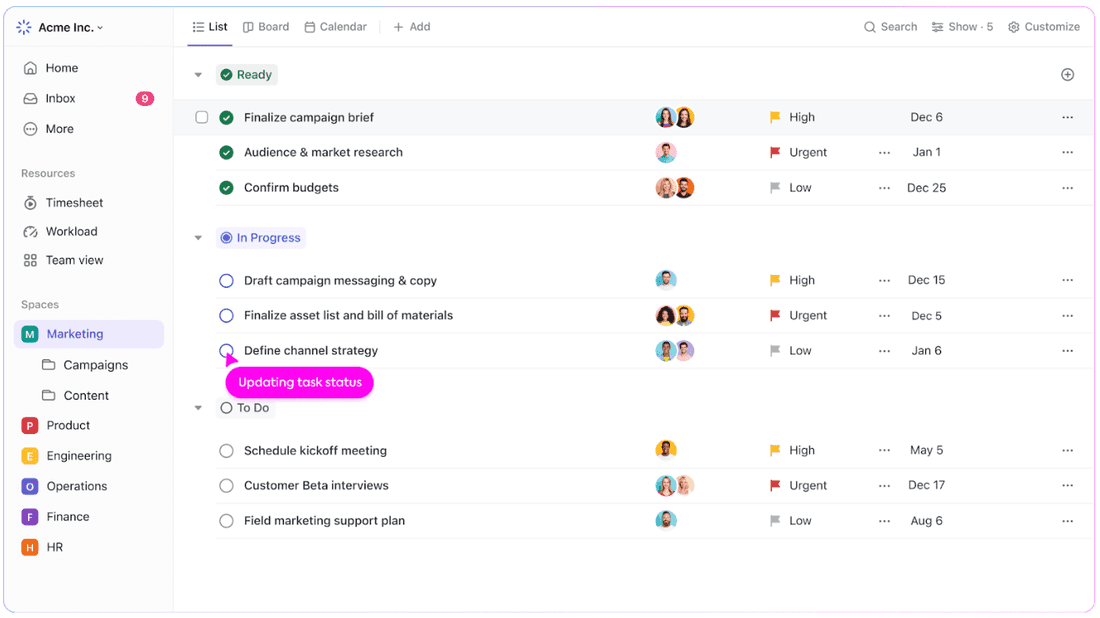
-
Price: Free plan with limitations; paid plans start at $5/user per month.
-
Best for: Teams already using ClickUp for project management and want to streamline idea collection directly within their existing workflow.
ClickUp, primarily known as a project management tool, offers features that make it adaptable for idea management as well. Its strength lies in centralizing idea capture and discussion within the same platform teams use for daily tasks.
Here’s how ClickUp can be used for idea management:
- Customizable Task Views: Create Kanban boards, lists, or calendar views specifically tailored for collecting and visualizing ideas at different stages of the process.
- Rich Task Descriptions: ClickUp tasks offer ample space for detailed descriptions, attaching files, and linking ideas to relevant projects or customer feedback.
- Collaboration within Context: Discussions can happen directly on tasks (representing ideas), promoting focused conversations, and keeping all related information in one place.
- Simple Prioritization: Use custom fields, tags, or ClickUp’s priority system to give a basic structure to idea sorting and ranking.
ClickUp may not be the best fit for teams needing robust scoring models, complex prioritization frameworks, or advanced reporting specifically focused on idea metrics.
Plus, some users reported slow performance of the software or some tasks vanishing from the workspace:
However, its affordability and ease of use within an existing ClickUp setup make it a compelling option for many teams.
Asana
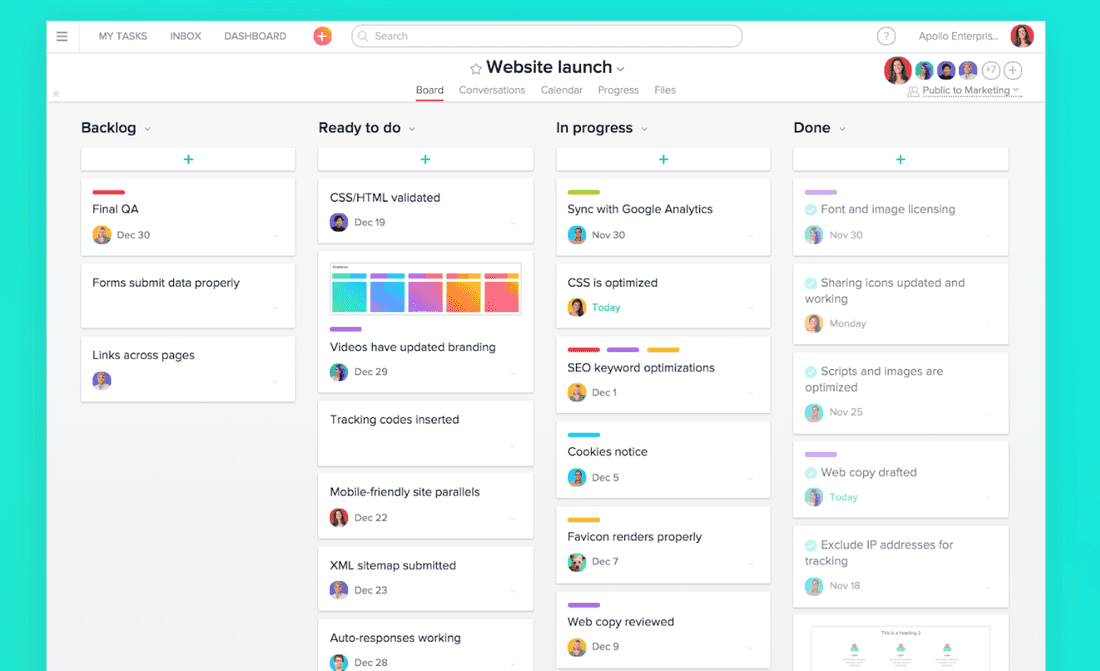
-
Price: Free plan with limitations; paid plans start at $10.99/user per month.
-
Best for: Teams that favor ease of use, want to integrate idea management into their existing Asana workflows, and need a visual way to track the progress of ideas.
Asana, a popular project management platform, provides the building blocks for setting up a basic, yet effective, idea management system. Its strength lies in its simplicity and ability to connect ideas with actionable tasks.
Here’s what makes Asana suitable for idea management:
- Visual Boards: The Kanban-style boards in Asana offer a clear way to track ideas as they move through stages like “Submitted,” “Under Review,” “Approved,” etc.
- Task = Idea: Each Asana task can represent an idea, with fields for descriptions, attachments, due dates, and assignees to provide additional context.
- Focus on Action: Asana’s core strength lies in turning ideas into actions. Once an idea is approved, it easily converts into tasks with clear ownership and deadlines.
- Integrations: Asana integrates with various idea-capturing tools (forms, Slack, etc.), expanding its ability to gather input from various sources.
Asana may be less ideal for teams that need advanced scoring models, detailed prioritization frameworks, or in-depth analytics specifically focused on idea flow.
The concern some users express is the lack of clarity about the access users have to specific projects.
This may break the flow of the work and confuse teams working on multiple projects at once.
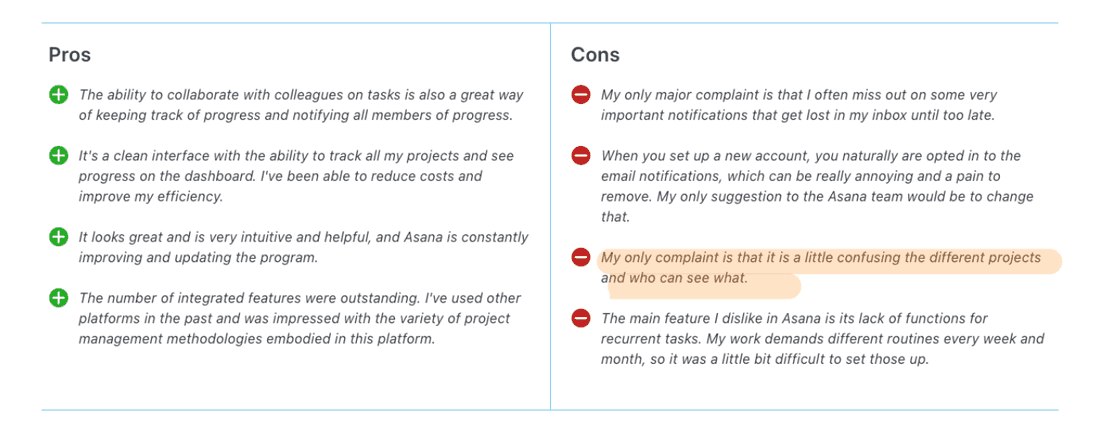
Final thoughts
However, its free plan and ease of setup make it an attractive entry point for teams new to idea management.
Idea management isn’t just about collecting suggestions; it’s about making smarter decisions for your product’s future. The right software empowers you with:
- A centralized hub for all feedback and ideas
- Structured processes for evaluating their potential
- Data insights to inform prioritization
Don’t let innovation happen by chance. Invest in idea management software to unlock the hidden gems within your customer feedback and fuel data-driven product development.
Ready to see how Fibery’s customization and flexibility streamline idea management? Start your free Fibery trial today and start turning customer insights into product wins.
Psst... Wanna try Fibery? 👀
Infinitely flexible product discovery & development platform.